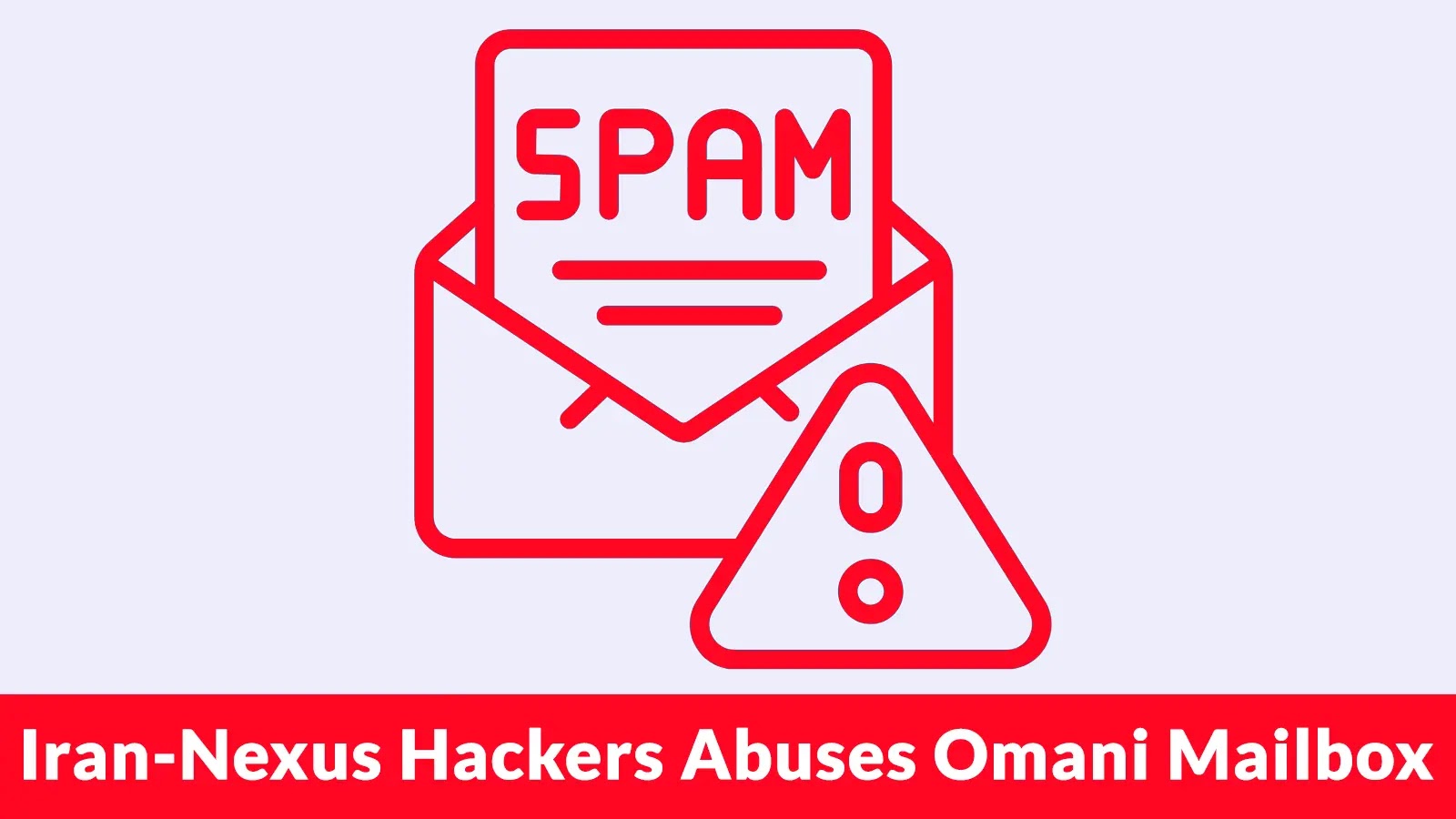
Iran-Nexus Hackers Abuses Omani Mailbox to Target Global Governments
Iranian Cyber Campaign Leverages Compromised Omani Mailbox: A Deep Dive into International Spear-Phishing
The global cybersecurity landscape remains in a constant state of flux, punctuated by sophisticated and politically motivated attacks. Recent intelligence has uncovered a highly orchestrated spear-phishing campaign orchestrated by Iranian-aligned threat actors, specifically targeting diplomatic missions worldwide. This insidious operation leveraged a compromised mailbox belonging to the Ministry of Foreign Affairs (MoFA) of Oman, showcasing a significant escalation in tactics and a bold attempt to exploit trusted governmental infrastructure.
Discovered in August 2025, this campaign represents a clear continuation of the methodologies and objectives associated with the “Homeland Justice” group, which intelligence links directly to Iran’s Ministry of Intelligence and Security (MOIS). Understanding the intricate details of this attack is crucial for bolstering international cybersecurity defenses and protecting sensitive diplomatic communications.
The Oman MoFA Compromise: A Gateway for Global Espionage
The cornerstone of this spear-phishing campaign was the successful compromise of a mailbox within the Omani Ministry of Foreign Affairs. This breach provided the Iranian-nexus hackers with an invaluable platform to launch highly credible and deceptive attacks. By originating emails from a seemingly legitimate and trusted government domain, the threat actors significantly increased the likelihood of their targets opening malicious attachments or clicking on malicious links.
The choice of a diplomatic entity’s email system as an operational base is a strategic move. Recipients, particularly those in diplomatic circles, are more prone to trust communications originating from official foreign government channels, making them highly susceptible to social engineering tactics. This incident underscores the critical importance of robust email security and continuous vigilance within governmental organizations, as their systems can inadvertently become launchpads for wider cyber espionage.
“Homeland Justice” and MOIS: Tracing the Threat Actor
The identified tactics, techniques, and procedures (TTPs) strongly align with those previously observed from the group known as “Homeland Justice.” This entity has a well-documented history of engaging in cyber operations attributed to Iran’s Ministry of Intelligence and Security (MOIS). Their modus operandi often involves sophisticated social engineering, spear-phishing, and the sustained targeting of geopolitical adversaries and specific individuals with access to sensitive information.
The continuity in tactics, even as the scale and sophistication of the operations evolve, highlights the persistent threat posed by state-sponsored groups. Their long-term objectives typically involve intelligence gathering, disruption, and potentially, influence operations. The utilization of a compromised Omani government asset suggests a deliberate strategy to broaden their reach and circumvent direct attribution, adding layers of complexity to incident response and threat intelligence efforts.
Spear-Phishing Tactics: Exploiting Trust and Credibility
The campaign employed classic spear-phishing methods, albeit with enhanced credibility due to the compromised source. Key aspects of the attack included:
- Targeted Deception: Emails were meticulously crafted to appear legitimate, often impersonating official communications, diplomatic invitations, or urgent requests from within the diplomatic community.
- Malicious Payloads: While specific payloads were not detailed in the source, typical spear-phishing campaigns leverage malicious attachments (e.g., weaponized documents) or embedded links directing victims to credential harvesting sites or drive-by download pages.
- Exploitation of Trust: The compromised Omani mailbox served as the perfect cover, leading recipients to believe the sender was a trusted entity, thereby bypassing many standard email security filters and user skepticism.
The effectiveness of this campaign hinges on understanding human psychology and leveraging established trust relationships. Even the most technically secure systems can be circumvented if human operators fall victim to clever social engineering.
Remediation Actions and Proactive Defense
Addressing such sophisticated spear-phishing campaigns requires a multi-layered and proactive approach. Organizations, particularly those in government and defense sectors, must implement stringent security measures.
- Enhanced Email Security: Implement advanced email security gateways (SEG) with sandboxing, URL rewriting, and robust attachment scanning. Consider DMARC, SPF, and DKIM to prevent email spoofing.
- Endpoint Detection and Response (EDR): Deploy EDR solutions across all endpoints to detect and respond to malicious activity post-compromise, including the execution of malware delivered via spear-phishing.
- Security Awareness Training: Conduct regular and interactive security awareness training sessions for all employees, emphasizing the dangers of spear-phishing, identifying suspicious email characteristics, and reporting potential incidents.
- Multi-Factor Authentication (MFA): Mandate MFA for all email accounts, VPN access, and critical systems. This significantly reduces the impact of compromised credentials.
- Vulnerability Management: Continuously scan and patch systems for known vulnerabilities. While this campaign leveraged social engineering, unpatched systems can provide alternative entry points for attackers.
- Threat Intelligence Sharing: Actively participate in intelligence sharing platforms to stay updated on emerging threats, TTPs, and indicators of compromise (IoCs) related to state-sponsored actors.
Tools for Detection and Mitigation
Leveraging appropriate cybersecurity tools is paramount for both prevention and rapid response.
| Tool Name | Purpose | Link |
|---|---|---|
| Proofpoint Email Security | Advanced email gateway for threat protection, imposter detection, and URL defense. | https://www.proofpoint.com/us/products/email-protection |
| Microsoft Defender for Endpoint | Endpoint Detection and Response (EDR) for post-breach detection, automated investigation, and response. | https://www.microsoft.com/en-us/security/business/endpoint-security/microsoft-defender-endpoint |
| KnowBe4 Security Awareness Training | Platform for simulated phishing attacks and gamified security awareness training. | https://www.knowbe4.com/ |
| CrowdStrike Falcon Insight XDR | Extended Detection and Response (XDR) covering endpoints, cloud, identity, and data. | https://www.crowdstrike.com/products/falcon-platform/xdr/ |
Conclusion: The Enduring Challenge of State-Sponsored Cyber Espionage
The Iranian-nexus hackers’ exploitation of an Omani government mailbox to target global diplomatic missions highlights the persistent and evolving threat of state-sponsored cyber espionage. This incident underscores several critical takeaways: the audacity of threat actors to leverage trusted national infrastructure, the effectiveness of sophisticated spear-phishing when paired with social engineering, and the urgent need for continuous vigilance and robust cybersecurity frameworks across all sectors, particularly within government and diplomatic entities.
As the digital battleground expands, proactive defense, comprehensive threat intelligence, and a well-trained human element remain the strongest bulwarks against these sophisticated and politically motivated attacks. The incident serves as a stark reminder that no organization is immune, and vigilance must be an always-on endeavor.





